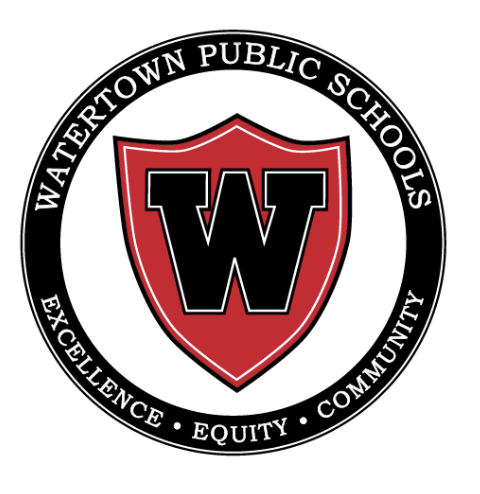
The Watertown Public Schools opened last week and welcomed back full classes of students, with only a handful of COVID-19 cases, and plans to keep as many students in class as possible during the pandemic.
The freshman class at Watertown High School is one of the largest in recent years, with 212 students, making the total enrollment at WHS 716, said Superintendent Dede Galdston. The kindergartens in Watertown also got a big group of students. There are 12 classes across the three elementary schools, with a combined 336 students.
Watertown High School students were greeted by posters, streamers and banners when the school year started, said Senior Class president Emma Fallon.
“Kids are definitely back in school and ready to learn,” she told the School Committee.
Eleni Hum, as senior who is the student representative to the School Committee, said some worried that freshmen would be quiet and shy after not being in school for a couple years, but they have been very excited to be back in school, she said.
“It has been a really great kick off to the school year,” Hum said. “It feels, aside from the masks, like normal — like it did freshman year and the beginning of sophomore year.”
Galdston told the School Committee Monday that Watertown’s enrollment was solid, and that only one school has had an outbreak so far.
“There have been two cases so far at Hosmer Elementary,” Galdston said. “Currently, 36 students are in quarantine.”
In the system being used at the beginning of the school year, students who are considered “close contacts” of someone who has tested positive for COVID-19 must quarantine at home. At the elementary level that includes all students in the classroom because they spend all day in the same group and move around more. At the middle and high schools, it is students who are within three feet of a positive case for 15 minutes, or more, cumulatively through the day.

The rules will change on Oct. 4, Galdston said, when Watertown begins using the “Test and Stay” program. This is for students considered close contacts who are unvaccinated who are not showing symptoms.
“They come to school, do a rapid test, and if it comes back negative they can stay in school,” Galdston said. “They repeat that for five consecutive days, and at the end of that they do not have to retest, but must check for symptoms.”
For students who are vaccinated who are close contacts, they do not have to be tested every day, Galdston said. They do have to have one negative test on day three to five after being exposed to the virus in order to stay in school.
Students who do not want to be tested can quarantine for seven days, Galdston said, and come back after testing negative on the eighth day.
The goal is to keep students in school for as many days as possible, Galdston said.
“The point of Test and Stay is after we determine a positive pool, we know the person who is positive is in isolation. But, the rest of the students have masks, we have air purifiers, we have testing,” Galdston said. “We believe those students are more than likely not going to contract COVID. We test them everyday and wear masks to make sure that is not the case.”
The tests would be given before school, for example at 7:30 a.m. if school starts at 8:15 a.m., to give time for the test results to come back, Galston said. If the test comes back negative the student can go to class.
Parents may choose to bring their child in to get the test, then go home to await the result, or they could wait in the car, Galdston said. If that is not an option, Galdston said, the school will set aside an area where a student can wait for test results.
The School Committee asked what happens if the supply of tests from the state runs low, noting that there has been great demand for tests recently. Galdston said Watertown has a two-pronged test supply system.
“There are private vendors who can supply to us if the state program is not able to supply enough,” Galdston said.
Galston also reported the latest vaccination rates for school-age students and for faculty and staff.
During the week of Sept. 6, the vaccination rate in Watertown for all 12-15 year olds (not just in the public schools) was 59 percent fully vaccinated and 69 percent had received at least one dose. For all Watertown residents age 16-19, 66 percent were fully vaccinated and 74 percent received at least one dose.
School officials surveyed teachers and staff about vaccinations at the beginning of the school year, and found that the vaccination rate was 98.6 percent of the entire staff (teacher as well as other district employees). The survey included 502 district employees. The district got responses from 422 (or 95 percent) of teachers and instructional aides (IAs).
The COVID-19 rate for Watertown as a whole during the week of Sept. 6 was 14.5 cases per 100,000.
“This is slightly higher than previous weeks, but we are not seeing a tremendous spike in the community,” Galdston said.
She added that the rate is lower than the rates for Middlesex or Suffolk counties as a whole, which are 16.3 per 100,000 in Middlesex and 20.5 per 100,000 in Suffolk (which includes the neighboring community of Boston).
The positive test rate in Watertown was 1.65 percent during the week of Sept. 6, Galdston said, which is about the same as the overall rate for Middlesex and Suffolk counties.